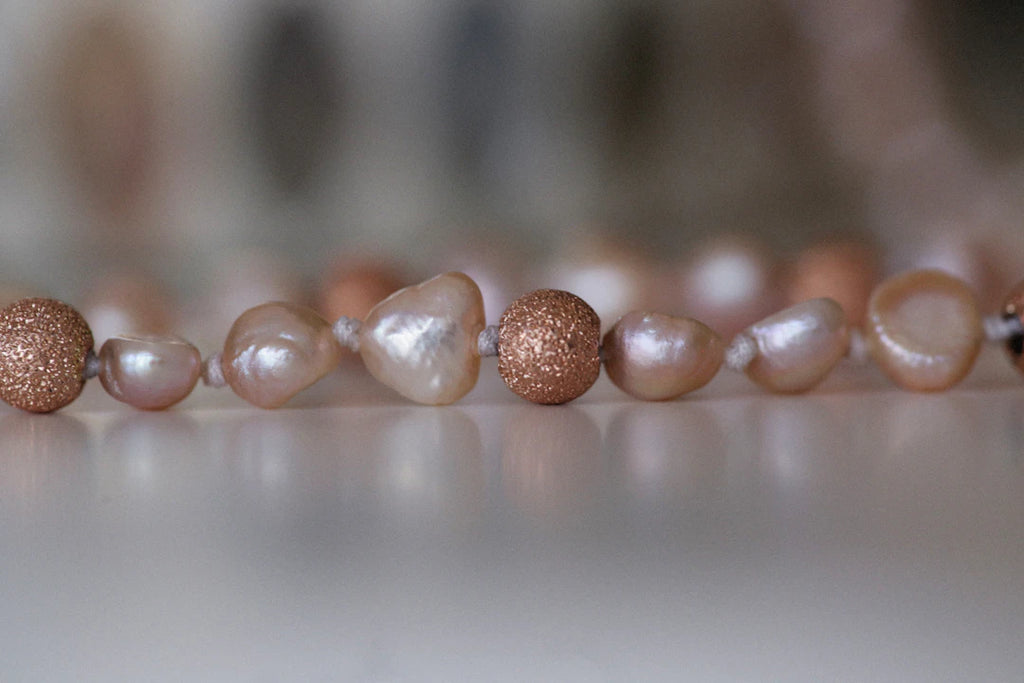The Art of Grading and Valuing Tahitian Pearls

Overview
Tahitian pearls, known for their unique dark colors and exotic origins, are graded based on luster, skin quality, shape, size, and color. Proper certification is essential for verifying their quality and authenticity. Market demand and trends influence their value, and caring for them involves safe storage, avoiding chemicals, and regular cleaning. Investing in Tahitian pearls requires understanding both their grading and market dynamics, making expert consultation beneficial. Ultimately, these pearls carry cultural significance and timeless beauty.
Frequently Asked Questions
1. What are Tahitian pearls?
2. How are Tahitian pearls graded?
3. What factors affect the value of Tahitian pearls?
4. Why is certification important when buying Tahitian pearls?
5. What are some care tips for Tahitian pearls?
Tahitian pearls, often referred to as "black pearls," have a unique allure that captures the hearts of jewelry lovers worldwide. Their exotic origins and stunning colors make them a highly sought-after commodity. However, not all Tahitian pearls are created equal, and understanding how they are graded and valued is essential for any prospective buyer or enthusiast. In this article, we will explore the multifaceted grading system used for Tahitian pearls and what factors contribute to their valuation.
The Origins of Tahitian Pearls
Tahitian pearls originate from the black-lipped oyster, Pinctada margaritifera, found in the crystal-clear waters of French Polynesia. These pearls are renowned for their dark hues, which can range from deep black to lighter shades of grey and even green. The geography, culture, and natural environment of Tahiti contribute significantly to the uniqueness and value of these pearls.
Understanding the Grading System
The grading of Tahitian pearls is a meticulous process that considers several factors. Pearl grading is generally conducted by professionals who examine the pearls under specialized lighting and conditions. The five main criteria used to grade Tahitian pearls are:
1. Luster
Luster refers to the reflective quality of a pearl's surface. It is one of the most crucial grading factors, as higher luster tends to correlate with better quality. High-luster Tahitian pearls shine intensely and have a deep, radiant glow, while lower luster pearls may appear dull or lack depth.
2. Skin Quality
The skin quality of a Tahitian pearl concerns its surface imperfections. Ideal pearls exhibit smooth, blemish-free surfaces. However, minor flaws like spots, ridges, or irregularities are common and acceptable to some extent. Pearls with fewer imperfections will be valued higher than those with blemishes.
3. Shape
Tahitian pearls are available in various shapes, including round, semi-round, baroque, and others. Round pearls tend to be the most sought after and are generally more valuable. Unique shapes like baroque pearls may appeal to specific styles, but they usually carry a lower valuation than perfectly round pearls.
4. Size
The size of Tahitian pearls can vary significantly; typically, they range from 8mm to 18mm in diameter. Larger pearls are rarer and, therefore, more expensive. However, an average size pearl with superior luster will often command a higher price than a large pearl undermined by inferior grading factors.
5. Color
Tahitian pearls are celebrated for their wide array of colors, from deep blacks to stunning shades of peacock green, aubergine, and even silver. The most desirable colors tend to be the deeper tones with iridescent overtones. The richness of color and hue can significantly influence the pearl's overall value.
The Role of Certification
When purchasing Tahitian pearls, having a credible certification can add an extra layer of assurance regarding the quality and grade of the pearls. Certificates typically detail all grading criteria and verify the authenticity of the pearls. Buyers should feel empowered to request a certificate when considering a significant purchase, ensuring that they are receiving the quality they are paying for.
Market Demand and Trends
Like any luxury item, the value of Tahitian pearls can fluctuate based on market demand and current trends. As fashion evolves, so does the desirability of certain pearl colors, shapes, and sizes. Currently, there’s a growing trend toward sustainability and ethical sourcing which increasing numbers of consumers want to consider when purchasing Tahitian pearls. This trend has led to a demand for pearls cultivated using environmentally friendly practices, which can also impact their valuation.
How to Care for Your Tahitian Pearls
Once you have invested in beautiful Tahitian pearls, proper care is fundamental to preserving their condition and value. Here are some essential tips for caring for your pearls:
- Store them safely: Always keep your pearls in a soft pouch or separate compartment in your jewelry box to prevent scratches.
- Avoid exposure to chemicals: Pearls can be damaged by chemicals found in cosmetics, perfumes, and cleaning products. Apply such items before wearing your Tahitian pearls.
- Regular cleaning: Wipe your pearls with a soft cloth after each use to remove oils and dirt. Clean them occasionally with a slightly damp cloth, avoiding submersion in water.
Investing in Tahitian Pearls
If you are considering investing in Tahitian pearls, it's crucial to understand the aspects that will ultimately contribute to their long-term value. The factors mentioned earlier all play a significant role, but it’s also worth considering personal preferences, historical market performance, and the future direction of the Tahitian pearl market.
Consult with Experts
Investing in luxury items like Tahitian pearls can be daunting, and consulting with experts in the field is a wise decision. Dealers who specialize in Tahitian pearls can provide valuable insights into trends, valuation, and quality. Building a relationship with these experts may lead to better deals and exclusive access to information about rare pearls.
Understand the Market
Becoming familiar with the market dynamics surrounding Tahitian pearls is integral to making informed decisions. Trends can vary between regions and societal preferences; thus, keeping up to date with market reports and updates will enhance your ability to engage effectively in the purchasing process.
The Legacy of Tahitian Pearls
The legacy of Tahitian pearls extends beyond mere adornment; they are artifacts of cultural significance and timeless beauty. Each Tahitian pearl tells a story of its origin, harvesting, and the meticulous craftsmanship involved in bringing it to market. When investing in these pearls, one is not merely acquiring a piece of jewelry; they are cherishing a legacy that encapsulates the essence of French Polynesia.
In summation, understanding the grading and valuation of Tahitian pearls can enhance your appreciation and knowledge of these treasured gems. By knowing the primary grading factors, recognizing the importance of certification, and staying abreast of market trends, you can make informed decisions when purchasing Tahitian pearls. Armed with this knowledge, you can feel confident in selecting the perfect Tahitian pearl that not only complements your style but may also stand the test of time in beauty and value.

Leave a comment